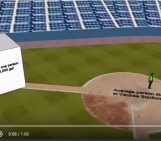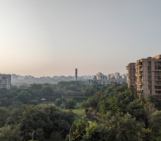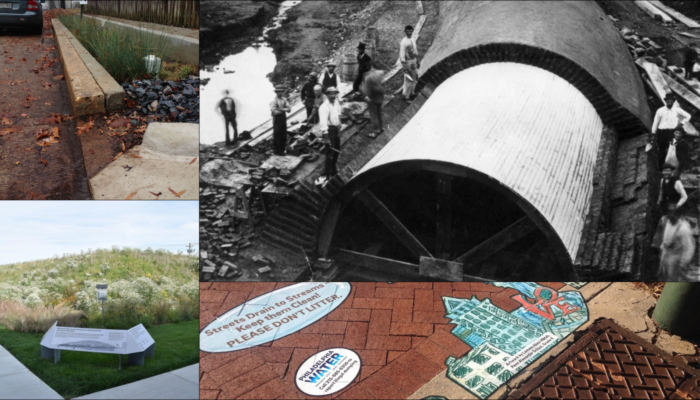
Post by Theodore Lim, assistant professor of Urban Affairs and Planning at Virginia Tech. He researches the socio-hydrology of green infrastructure planning and implementation.
In order for people to care about something, to value it, they have to be able to see it and experience it. This point should not be taken lightly. So much about decision-making and policy-making depends on how much public support can be organized around any given issue. So, when it comes to protecting the water resources that sustain society and the natural environment, it is perhaps unsurprising that groundwater is the part of water cycle that most folks tend to ignore.
Historically, urbanization has made it difficult for residents to experience key parts of the water cycle. In Philadelphia, for example, in order to improve sanitation, reduce flooding, and make way for the regular street grid, dozens of streams were channeled into brick sewers that were then buried under roads to make transportation routes more efficient and the city easier to navigate. Today, these historical streams are literally buried underground, and still carry a mix of raw sewage and stormwater runoff, that overflows into neighboring creeks and streams when it rains.
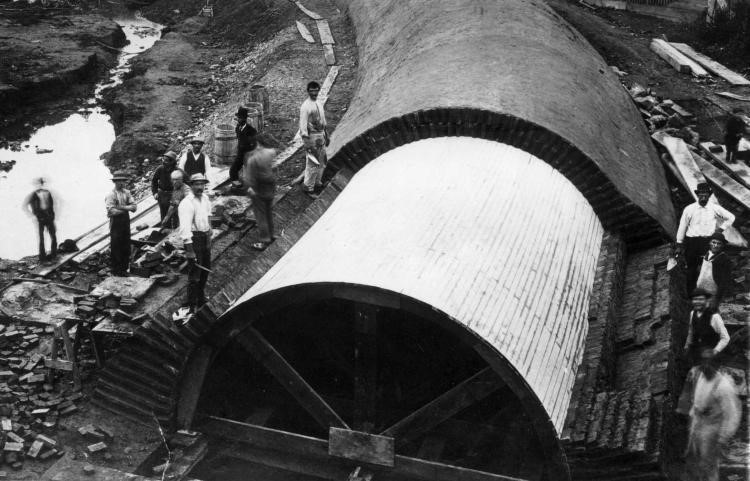
Sewering Mill Creek in West Philadelphia, 1883. Image Source: http://www.phillyh2o.org.
Green infrastructure is an approach to urban water management that reintroduces key parts of the hydrological cycle to the visible urban environment. Green infrastructure can involve surface water, through daylighting streams, but it can also means removing concrete and asphalt, to allow water to trickle slowly into the ground, be soaked up by plant roots, and evaporated back into the air, or to recharge deeper groundwater tables. An example of this is a rain garden, or bioinfiltration facility, which intercepts rainfall with vegetated land, as an aesthetic and low-maintenance alternative to conventional drainage systems.
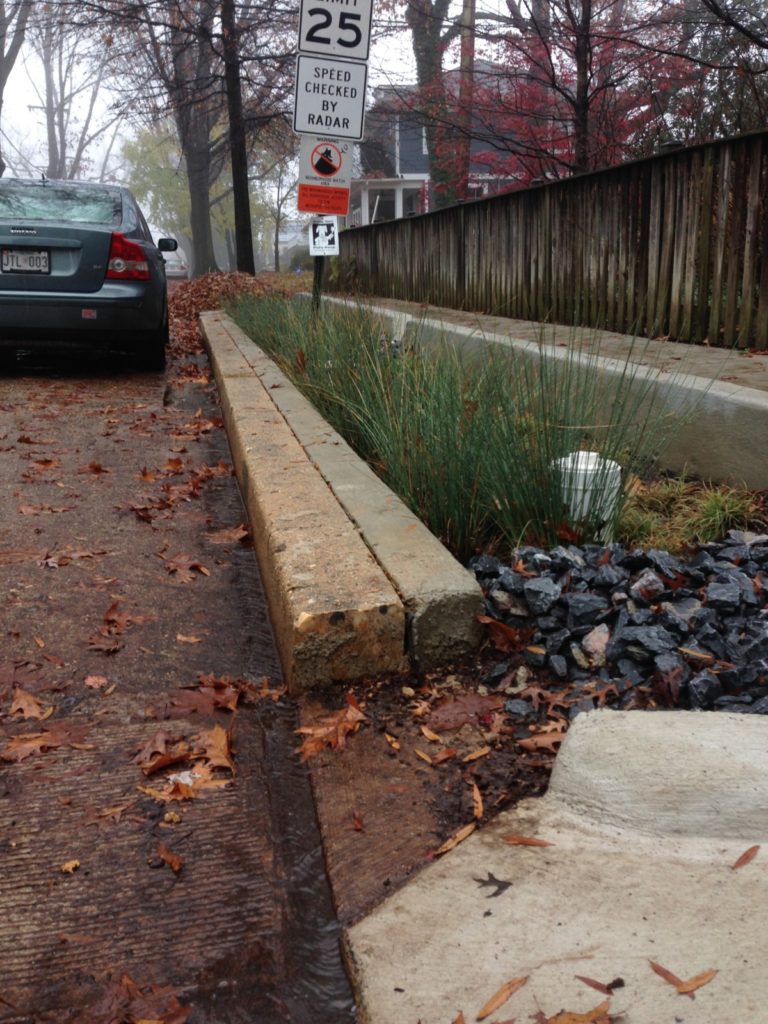
Bioinfiltration facility installed in a residential neighborhood in Washington, D.C. (Photo by author)
How do urban residents “see” these important elements of the hydrological cycle? One answer is: by their recognizing them as “infrastructures” for modern cities — elements that provide critical services, in addition to environmental amenities. Plants and restored soils are not just “nice to have,” they help moderate surface temperatures, protect water quality, and support biological function. Public investment in street tree planting has been shown to increase pedestrian activity, public health, and property values. Green infrastructure programs in cities can also be integrated with climate action plans, sustainability initiatives, and parks and recreation programs; such programs often attract businesses and residents with their progressive attitudes.
Urban residents can learn about the “ecosystem services” associated with hydrological cycle improvements thanks to scientific signage, infographics, partnerships between environmental non-profits and community outreach, programs run by municipal water managers (water/wastewater utilities, departments of environmental protection, or stormwater districts). Most of all, residents learn from each other and are more likely to adopt environmentally friendly behaviors when they are surrounded to neighbors who do the same.
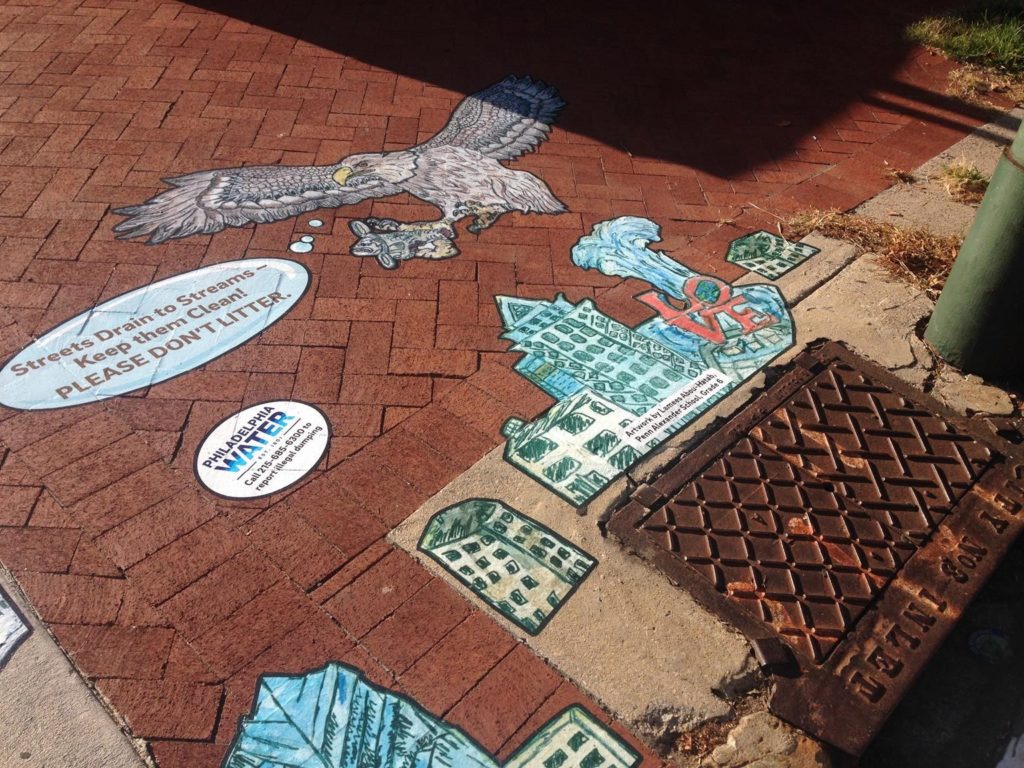
Stormdrain art in Philadelphia, designed by children in Philadelphia public schools (Photo by author)

Green infrastructure monitoring and signage in Chicago. Image: https://nextcity.org/daily/entry/chicago-sensors-green-infrastructure-study
Restoring hydrological function within urban areas can be seen as a microcosm of larger-scale environmental policy-making. On the regional scale, “green infrastructure” can refer to the large swaths of undeveloped land in a natural state, or to working lands, such as those used for timber production or agriculture, which all provide critical ecosystem services to society. Environmental planners who work at the state or regional level or with land trust organizations, might use policies, economic incentives, and land regulations to protect these landscapes from low density suburban sprawl or urbanization. However, on both urban and regional scales, the decision-making about land use, management, and development is heavily dependent on co-operation between diverse stakeholders, and relies on a mutual understanding of the value of natural environments for various communities..
Urban and environmental planners tell stories that bring together multiple voices in collaboration. These stories also give the historical and social context to decision-making around environmental systems, which is vital to ensure equitable outcomes. Unfortunately, despite advances in integrated modeling and the scientific knowledge of complex interrelations between water and society, decision-making still falls back on heuristics and rules-of-thumb. A highly relevant question therefore is: how can we integrate groundwater science into more robust city and regional-scale participatory planning, that is equitable and implementable? The answer will hopefully lead us to a strategy where urban and environmental infrastructures visibly advance the well-being of communities.


